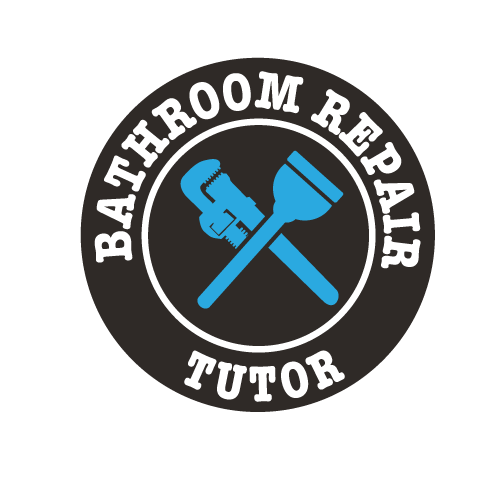Getting Started
Leaking bath tubs stink. And they are expensive.
Here’s an example,
Our friend Mark had a contractor redo his bathroom. Unfortunately the contractor subbed out the bath tub installation.
The sub-contractor used a tub without a flange and set the tub base in spray foam. In addition, the sub applied caulk between the tub deck and cement board to ‘seal’ the transition.
What’s wrong with that?
Spray foam eventually compresses. And when that happened, Mark’s tub began to leak water between the tub deck and cement backer board.
That water also damaged the downstairs bathroom.
This left Mark with not one but two bathrooms to repair!!
How Much Does it Cost to Replace a Tub?
Let’s break down the cost
- Bath tub $300-$800
- Rough-in valve $300-$500
- Backer Board $200-$500
- Tile $500-$1000
- Thin-Set Mortar $20-$80
- Grout $20-$40
- Grand Total $1340 to $2920
And those Grand Total numbers don’t include labor.
Why is there such a wide range for the cost of replacing bath tubs?
Not all materials are the same price. For example, steel bathtubs are cheap compared to the Kohler Archer. The latter is roughly $700-$800.
Furthermore, cement board is $12 per sheet. But something like Wedi is almost $50 per sheet. However, most installers would agree that Wedi is much faster and easier to install.
How Long Does it Take to Replace a Bath tub?
This question is tricky. Are you a DIYer who’s never done a bath tub replacement? Or are you a seasoned contractor who’s installed hundreds of tubs?
Newbie DIYers might take 3-7 days to demo the tub, replace it, waterproof the walls and tile. It could take much longer. Not everyone has the time to work on a project non-stop.
Contractors on the other hand could knock out this project in 2-5 days. It also depends on the intricacy of the tile work and other factors. For example, if the floor joists need to be replaced then that might set back a contractor 1 or 2 days.
One thing is for sure, have a game plan before starting. Our Tub Shower Master Course has game plans for tubs over wood and concrete. These show exactly what has to happen on day 1 thru day 10 of a typical bathroom remodel.
How Do I remove an old Bathtub?
Here’s a quick checklist for removing an old bathtub:
- Tape off any HVAC vents to reduce dust in the home
- Turn off the water to the home to prevent flooding
- Shut off electrical to the bathroom to avoid cutting live wires
- Remove the shower head, rough-in trim, shower handles, and tub spout
- Take fiberglass shower surrounds out in three sections with a reciprocating saw or
- Use a hammer to remove old tile and backer boards in small 3 foot by 3 foot sections
- Disconnect the tub P-Trap from the drain as well as the waste overflow pipes
- Remove nails or screws holding the tub to the stud walls
- Smash or cut old cast iron tubs into smaller pieces or
- Remove the old acrylic or fiberglass tub
- Install the new bath tub per the instructions
Obviously this checklist is condensed. And the installation of the new tub depends on the manufacturer’s instructions.
How are Bath Tubs Measured?
Bath tubs are measured from flange to flange for the length. This measurement is roughly 60 inches most of the time.
It might be best to demo the bath tub area first. Then measure the exiting tub from flange to flange.
Bath tub length is straight forward enough. What’s the best way to measure bath tub width?
Most alcove bath tubs are going to be 30 inches or 32 inches. With that in mind, measure the width of the old bath tub and see if its width is close to those dimensions.
If you don’t want to move the old bath tub plumbing get a new bathtub that’s the same size as the old one.
That said, bath tubs smaller than 32 inches tend to feel cramped. Furthermore, keep in mind the sides of most tubs angle upward. This reduces the overall width and feel of the tub. Therefore, try to maximize bath tub width if possible.
How Do I Replace My Bath Tub?
Here’s a short checklist to replace your bathtub:
- Check the wood or concrete subfloor to ensure it’s level
- Fix any subfloor issues by either sistering new joists or self-leveling
- Read the manufacturer’s directions to replacing the bathtub
- If mud beds are recommended use a mud bed under the new bath tub
- Pre-drill holes in acrylic tubs at the stud locations
- Ensure all studs are even, plumb, and 16 inches on-center
- Address any irregular studs by shaving them down or sistering new 2x4s
- Install the drain and P-Trap to the necessary tub drain location
- Apply a mud bed to the subfloor if directed by the manufacturer
- Set the tub in place, check it’s level, and secure it to the studs
Some bath tubs recommend the use of mortar under the tub. If that’s the case, we highly recommend using Mapei’s Mud Bed Mix.
Here’s the deal,
Mapei recommends applying modified thin-set to the tub area using directional troweling and a 1/4″ x 1/4″ square notch trowel. Then adding the Mud Bed Mix over the modified thin-set.
Is this absolutely necessary?
It’s somewhat of a gray area. Modified thin-set will help Mud Bed Mix bond properly to wood or concrete. But many times we install tubs directly into the Mud Bed Mix because it’s being used to support the tub base only.
If your tub is acrylic it’s best practice to pre-drill holes in the tub flange. Do this at all stud locations. Then use stainless steel or galvanized screws to secure the tub to the studs.
If your tub is cast iron or steel use stainless steel screws with washers to pinch the tub flange to the stud walls.
Can You Replace a Bath Tub Without Re-Tiling?
It’s possible to replace a bath tub without re-tiling. But holy mackerel, it’s not easy.
First, you’ll likely compromise the waterproofing. Tile, when set properly, bonds to backer boards with incredible strength.
Second, you’ll have to figure out a way to add new backer board and waterproof the seam between the old boards. Good luck. It’s surgical work at best.
Finally, it might take you longer to do this kind of work than it would to replace the entire bath tub and surround.
We’d opt for replacing everything and knowing the work was done properly.
Hopefully you thought this guide was helpful. Let us know if you have any questions.
Also, if you’re doing a complete bathroom remodel or bath tub replacement check out the Bathroom Repair Tutor Video Library.
All videos are step-by-step and we also offer support for when you have tough questions.
Cheers,




Comments